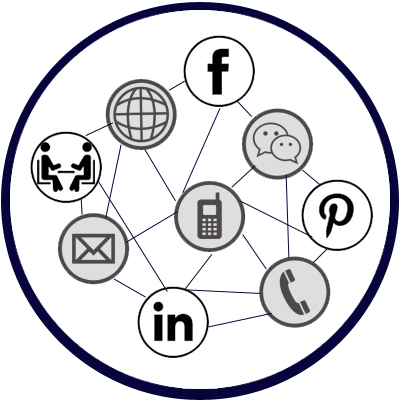
Business development is a process rather than a one-time event. It requires a long-term perspective and the key activity for achieving success is follow-up – i.e., staying in regular contact with customers, prospects, and influencers/referral sources.
We have observed that most people fail to follow-up with sufficient frequency or with a value-added purpose.
Frequency guidelines:
If we move too slowly, we run the risk of losing mindshare with our marketplace and losing opportunities to competitors or shifting priorities. If we are too aggressive, we run the risk of alienating our audience.
Research indicates that, on average, it requires 8 touches (i.e., phone conversations, voice mail messages, emails, etc.) to make something happen with a prospect. This may or not be a sale, as in many cases it might require that many attempts to simply schedule a first meeting or presentation.
To maintain mindshare with influencers or referral sources three meaningful interactions per year are typically needed, along with intermittent phone and email interaction.
The right “cadence” of contacts for customers will vary depending upon the current depth of your relationship and the amount of potential for increasing it. But whatever number of touches you deem to be most appropriate, make sure a sufficient number of them are “proactive.” In other words, the impact of an unexpected value-added reach-out is far greater than responding to a customer inquiry.
The best way to maintain desired contact frequency is to schedule the next step at the end of each conversation or meeting. Generally, contact frequency only becomes over-done when we have nothing of value to say or share.
Value-added reasons for reaching out:
When making a call or stopping by, “checking-in” or “touching-base” are not value-added Here are a few examples of “value-added” reasons to reach out to a customer or prospect:
- To make a personal introduction (prospect).
- To conduct an account review (customer).
- To schedule a meeting based on an assessed or likely need.
- To present relevant information about an expressed interest or need.
- To discuss changes to a previously presented proposal.
- To complete a sale.
- To recognize a milestone (i.e., award, anniversary, etc.)
- To invite them to an event, lunch, etc.
Here are some examples of “value-added” reasons to reach out to a referral source:
- To give a referral.
- To provide status on a referral you received.
- To recognize or congratulate them on some type of achievement or milestone.
- To schedule a meeting, coffee, lunch, Zoom…
- To invite them to an event or social gathering/activity.
- To schedule a seminar/webinar for their staff or clients.
- To share information related to your expertise that could impact them or their clients.
- To ask them a question about their area of expertise.
- To share relevant information about an area of interest.
- Sympathy.